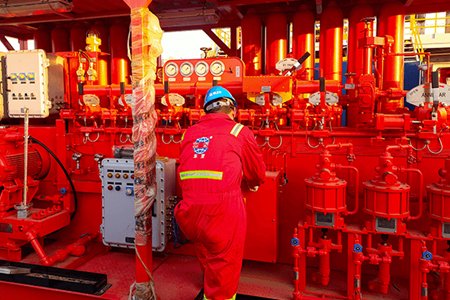Blowout preventers (BOPs) are critical safety devices used in drilling operations to prevent uncontrolled releases of oil and gas from wells. These complex hydraulic systems play a crucial role in safeguarding personnel, equipment, and the environment during drilling and well intervention activities. In this comprehensive article, we will explore how blowout preventers work through an animated explanation, shedding light on their components, operation, and importance in ensuring well control and integrity.
Blowout preventers are large, heavy-duty valves installed at the top of a wellbore to provide a barrier against the uncontrolled release of hydrocarbons. They are designed to seal the wellbore and control the flow of fluids under high pressure conditions, effectively preventing blowouts, well kicks, and other hazardous situations that could lead to catastrophic incidents.
Blowout preventers consist of several key components, each serving a specific function in the well control system:
Hydraulic Rams: Hydraulic rams are movable components that extend or retract to seal off the annular space between the drill pipe and the wellbore. They are activated hydraulically and come in various configurations, including annular rams, pipe rams, and shear rams, each designed to accommodate different wellbore conditions and equipment sizes.
Annular Preventer: The annular preventer is a flexible, doughnut-shaped device that forms a seal around the drill pipe or casing, preventing the escape of fluids from the wellbore. It is capable of accommodating variations in pipe size and can provide a reliable seal in a wide range of well conditions.
Shear Rams: Shear rams are specialized components designed to sever the drill pipe or casing in the event of an emergency, such as a well blowout or equipment failure. They are equipped with powerful cutting blades that can quickly and effectively shear through the pipe, enabling the well to be sealed off and controlled.
Control System: The control system consists of hydraulic valves, actuators, and control panels that regulate the operation of the blowout preventer. It allows operators to activate and deactivate the various components of the BOP as needed, ensuring precise control over wellbore pressure and fluid flow.
Blowout preventers are typically deployed in a stacked configuration, with multiple BOPs installed in series to provide redundant layers of protection. During normal drilling operations, the BOP is maintained in an open position to allow the passage of drill pipe and other equipment into the wellbore.
However, in the event of a kick, wellbore instability, or other emergency situation, the blowout preventer is activated to seal off the wellbore and regain control of the well. This process involves the following steps:
Activation: Upon detecting an abnormal pressure or flow condition, the drilling crew initiates the activation of the blowout preventer by closing the hydraulic rams and/or annular preventer.
Sealing: The hydraulic rams or annular preventer are hydraulically actuated to create a seal around the drill pipe or casing, effectively shutting off the flow of fluids from the wellbore to the surface.
Shearing: In the event of a catastrophic failure or well blowout, the shear rams are deployed to sever the drill pipe or casing, isolating the affected section of the wellbore and preventing further release of hydrocarbons.
Monitoring and Control: Throughout the operation of the blowout preventer, drilling personnel continuously monitor pressure, flow, and other parameters to assess the effectiveness of the BOP and ensure safe conditions are maintained.

Blowout preventers play a crucial role in ensuring the safety and integrity of oil and gas drilling operations. By providing a reliable barrier against uncontrolled releases of hydrocarbons, BOPs protect personnel, equipment, and the environment from the devastating consequences of blowouts, spills, and other well control incidents.
Furthermore, blowout preventers are required by regulatory authorities as part of comprehensive well control and safety management systems. Rigorous inspection, maintenance, and testing of blowout preventers are essential to verify their functionality and readiness for deployment in emergency situations.
In conclusion, blowout preventers are indispensable safety devices that play a critical role in the oil and gas industry. Through their sophisticated hydraulic mechanisms and redundant design features, BOPs provide a reliable barrier against well control emergencies, allowing drilling operations to proceed safely and efficiently. By understanding the components and operation of blowout preventers, drilling personnel can effectively mitigate risks and ensure the integrity of wellbore systems, safeguarding both human lives and the environment.
By continuing to use the site you agree to our privacy policy Terms and Conditions.